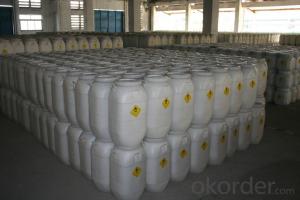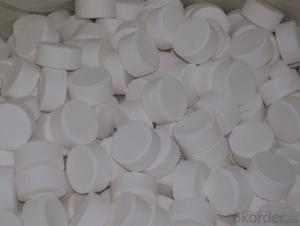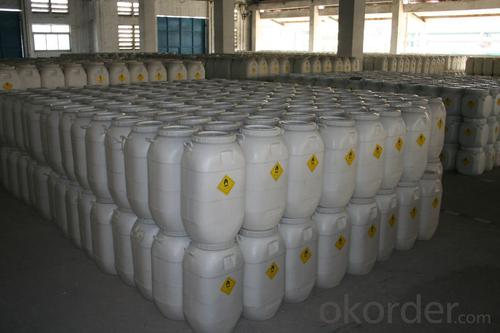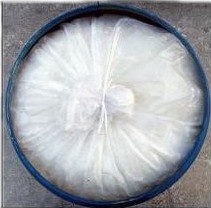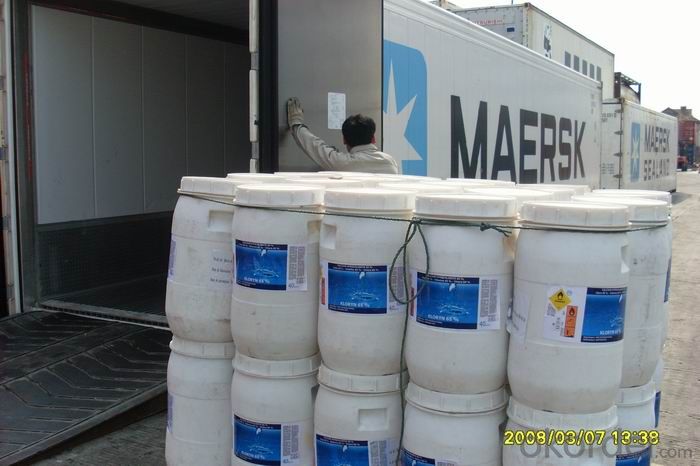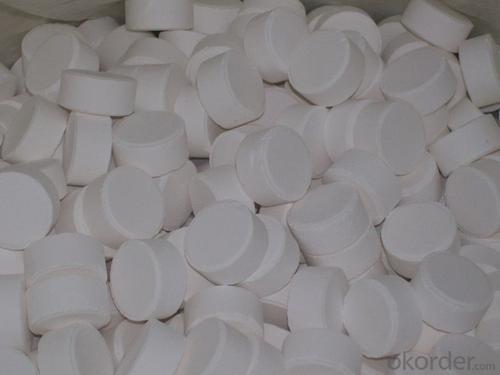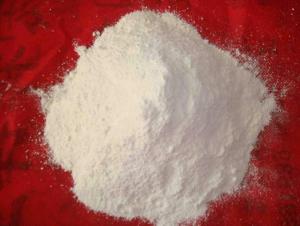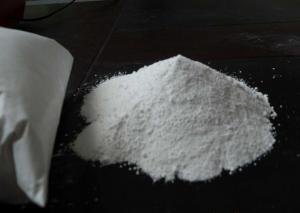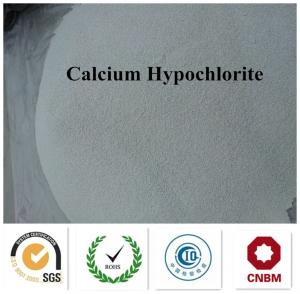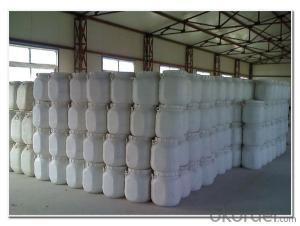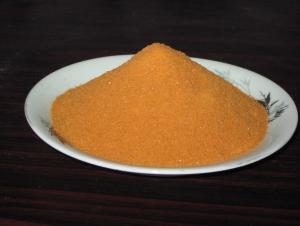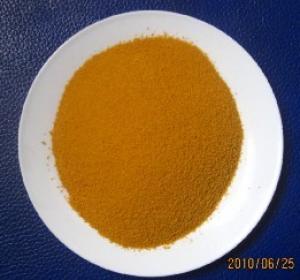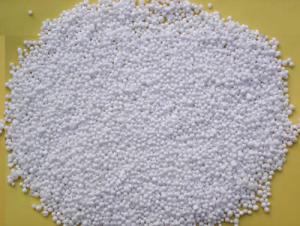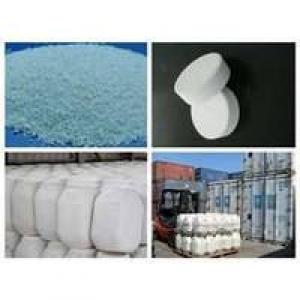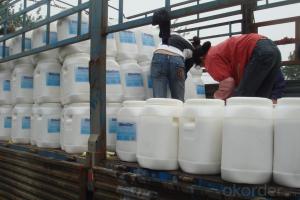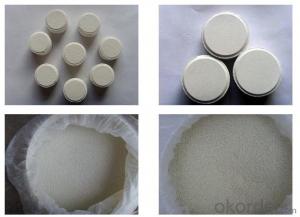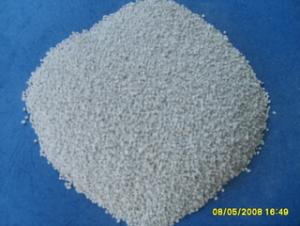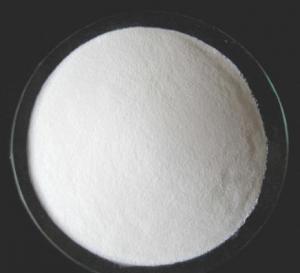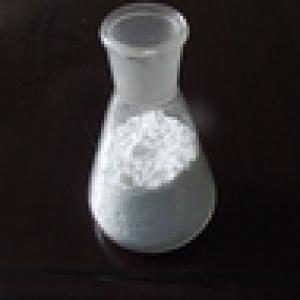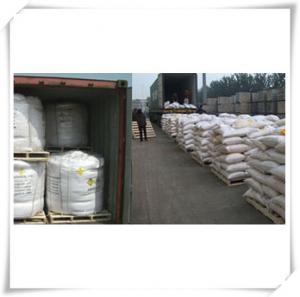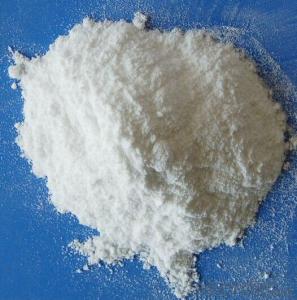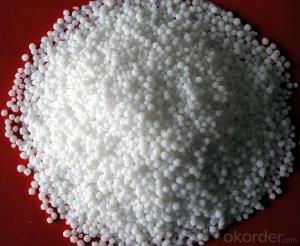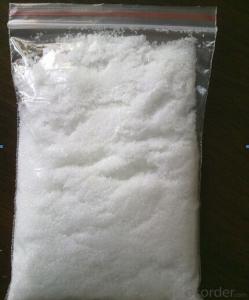Calcium Hypochlorite Granular Used for Water treatment
- Loading Port:
- Tianjin
- Payment Terms:
- TT OR LC
- Min Order Qty:
- 25 m.t.
- Supply Capability:
- 2000 m.t./month
OKorder Service Pledge
OKorder Financial Service
You Might Also Like
Product name
Calcium Hypochlorite ( Chemical name: Calcium Hypochlorite ); Molecular formula:Ca(clo)2
Grade & Technical Specifications:
Index name | Top-grade | First grade |
Available Chlorine | 70% min | 65% min |
Moisture | 5.5-10% | 5.5-10% |
Yearly Loss of active Chlorine | 8% | 8% |
Undissolved substance | 5% | 6% |
Color | white or light-grey | |
Shape | power,granular, mixed, or following your demand | |
Price | market price |
Applications:
1. For bleaching purpose of wood pulp, silk, cloth and fibre.
2. Disinfection and water-treatment.
3. Disinfectant for chemical poisonous and radioactive substance.
Using Method of Calcium Hypochlorite
1) Mix 100 kgs of calcium hypo 65% into 1 MT of water. The solution will be bleaching liquid at a density of 6.5% effective chlorine.
2)1% disinfection liquid can be formulated by adding 1.7 grams of calcium hypo 65% into 1 MT of water.
Advantages of "Yufeng" Calcium Hypochlorite:
1) High effective chlorine content;
2) Good stability. Can be stored a long time at normal temperature with little chlorine loss;
3) Good solubility, less water-insoluble matters.
Cautions In Application:
1. Should be stored in cool and dry warehouse away from heating sources and avoid direct sunlight.
2. In transportation, contact with such should be avoided as sunlight, heating,moisture, organics, oil and acids.
How to handle in case of leakage:
Collect in time and seal properly.
measures in case of emergency:
Wash with thin soda water or diluted ammonia water in case of skin-burning.
Fire Extinguishing Methods:
Sand, CO2 foam can be used. Sulphate extinguisher is forbidden.
Packaging of Materials:
Normally in plastic or steel drums lined with inner plastic bag of 45-50kg net each.
Can be adaptable in terms of various requirements.
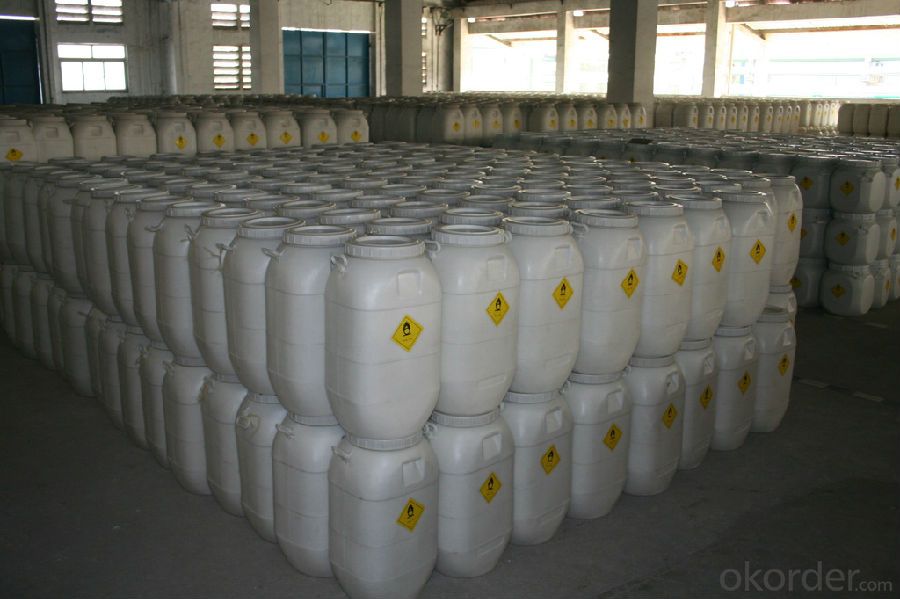
- Q: Inorganic salts play an important role in maintaining the life activities of living organisms. It is mainly in the form of living organisms.
- Inorganic salts are mineral nutrients present in the body and in the food. Most inorganic salts in the cells are present in the form of ions, consisting of organic matter and inorganic compounds.
- Q: Organic chemistry extraction lab. If the KBr wasn't there I would just add HCl to protonate the NH2, but I'm not sure if that will affect the KBr or the carbon chain. Both of these are in an aqueous phase.
- The amine will certainly coordinate to K+, but the interaction is not very strong and hydrogen bonding from water will compete efficiently. Also, if your amine is soluble in water, you are not going to be able to isolate it by turning it into the corresponding ammonium salt.
- Q: Why is the inorganic salt left after the burning of the food
- Food contains protein, fat, inorganic salts and water and other substances in the process of combustion in addition to inorganic salts and the rest of the water are burned, and water in the combustion process evaporates. So take the only inorganic salt.
- Q: By balancing the benefits of dietary supplementation with inorganic salts, what are the advantages and disadvantages of taking health care agents?
- Diet supplementation of inorganic salt or the nutritional needs of the human body is the normal diet of human absorption, rather than through deliberate conditioning to mobilize the body's ability to absorb (including deliberately balanced diet), that is, add inorganic salt only conventional diet Yes, no other adjustment supplement is its benefit, that is, healthy people do not need to like non-healthy state as a way to seek additional, this is his advantage.
- Q: How to isolate the effects of inorganic salts on enzyme solubility
- The raw materials of cotton stalk were pretreated with inorganic salt to dissolve part of lignin and hemicellulose, so as to improve the enzymatic hydrolysis efficiency. Sulfuric acid, sulfuric acid and sulfuric acid were used to pretreat the cotton stalk. The solid solution was separated and the lignin removal rate and the elution rate of the pentosan were determined. The solid phase was hydrolyzed at 50 ℃. Enzyme hydrolysis conversion rate; the process of glucose, pentosan, lignin for material accounting.
- Q: The human body does not intake of minerals can be? Lack of minerals on the human body what kind of harm?
- Body weight: 96% is organic matter and moisture, 4% for the inorganic elements of the body about 50 kinds of minerals, in these inorganic elements, has been found in about 20 elements constitute the body tissue, to maintain physiological function, Biochemical metabolism necessary, in addition to C, H, O, N mainly in the form of organic compounds, the rest are known as inorganic salts or minerals can be divided into constant elements and trace elements two categories.
- Q: What are organic and inorganic salts?
- An organic salt is a salt containing an organic ion ( carbon atoms ) The reaction product of an organic acid and an inorganic base, for example, sodium acetate (CH3COONa) from the reaction of acetic acid (CH3COOH) and sodium hydroxide (NaOH). The Organic ion, here, is CH3COO- Inorganic compounds come principally from mineral sources of non-biological origin. The modern definition of inorganic compounds often includes all metal-containing compounds, even those found in living systems. So, Inorganic salts are salts of such elements (salts that don't contain carbon atoms) For eg: NaCl, KCl, BaCl2, Al2SO4, etc
- Q: Why are inorganic sodium salts much better soluble in ethanol than potassium salts?
- The reason seems to be : - Ionization potential of pottasium is lower than that of sodium ,thereore potassium salts are more polar as compared to sodium salts; - Potassium being more reactive than the sodium reacts faster withbwater,
- Q: Effects of Minerals on Plants
- Root absorption of mineral elements is based on cell uptake. But the root of the absorption of mineral elements has its own characteristics. First, the roots of salt and water relative absorption. As the root of the salt and water absorption mechanism is different, the absorption is disproportionate. The second is that the root system is selective for the absorption of mineral elements. That is, some of the absorption of some ions, while the absorption of some ions with little or no absorption. The third is that single salt poison and ion confrontation. The general cationic toxic effect is obvious, the anion toxic effect is not obvious. In the single salt solution if adding a small amount of other valence of different metal ions in the salt, single salt poisoning phenomenon will be reduced or disappeared. This effect of ions is called ion confrontation. Generally in the periodic table of different groups of metal elements between the ions will have a confrontation. Plants as long as a certain concentration, a certain proportion of a variety of salt mixture in order to normal growth, this solution is called the balance solution. In the fertilization should be very careful.
- Q: The application of various inorganic salts in the human body?
- Silicon in the water was partial silicic acid form absorbed by the body, mainly distributed in human skin and connective tissue, in the process of skeleton has a physiological role in promoting the development of bone development. Silicon is also involved in the metabolism of polysaccharides, is to form some glucose The main component of the aminopolysaccharide carboxylic acid.
Send your message to us
Calcium Hypochlorite Granular Used for Water treatment
- Loading Port:
- Tianjin
- Payment Terms:
- TT OR LC
- Min Order Qty:
- 25 m.t.
- Supply Capability:
- 2000 m.t./month
OKorder Service Pledge
OKorder Financial Service
Similar products
Hot products
Hot Searches
Related keywords
